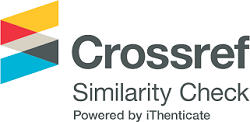Assessment of Longstanding Effects of Fly Ash and Silica Fume on the Compressive Strength of Concrete Using Extreme Learning Machine and Artificial Neural Network
Abstract
Compressive Strength (CS) is an important mechanical feature of concrete taken as an essential factor in construction. The current study has investigated the effect of fly ash and silica fume replacement content on the strength of concrete through Artificial Neural Networks (ANNs) and Extreme Learning Machine (ELM). In this study, different ratios of fly ash with (out) extra quantity of silica fume have been tested. Water cement (w/c) ratio varies during the test. Eight input parameters including Total Cementitious Material (TCM), Silica Fume (SF) replacement ratio, coarse aggregate (ca), fly ash (FA) replacement ratio, Sewage Sludge Ash (SSA) as a combination of cement and fine aggregate replacement, water-cement ratio, High Ratio Water Reducing Agent (HRWRA) and Age of Samples (AS) and one output parameter as the CS of concrete have been investigated through ANN and ELM. Up to now, numerous experimental studies have been used to analyze the compressive strength of concrete while retrofitted with fly ash or silica fume, however, the novelty of this study is in its use of AI models (ELM, ANN). The models have been developed and their outcomes were compared through six statistical indicators (MAE, RMSE, RRMSE, WI, RMAE and R2). Subsequently, both methods were shown as reliable tools for assessing the influence of cementitious material on compressive strength of concrete, however, ANN remarkably was better than ELM. As a result, FA showed less contribution to the strength of concrete at short times, but much at later ages. As a result, the enhanced influence of low amount of SF on CS was not significant. Adding fly ash has reduced the compressive strength in short term, but increased the compressive strength in long term. Adding silica fume raises the strength in short term, but decreases the strength in long term.
This is an Open Access article distributed under the terms of the Creative Commons Attribution License (http://creativecommons.org/licenses/by/4.0/), which permits unrestricted use, distribution, and reproduction in any medium provided the original work is properly cited.
Keywords
Full Text:
PDFTime cited: 120
DOI: http://dx.doi.org/10.25073/jaec.202151.308
Refbacks
- There are currently no refbacks.
Copyright (c) 2021 Journal of Advanced Engineering and Computation

This work is licensed under a Creative Commons Attribution 4.0 International License.










